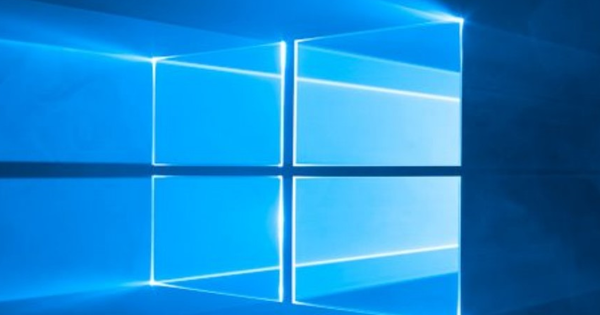The market for IP cameras is on the rise, which is clear when you consider the rise of smart, cloud-based cameras such as Google's Nest and Netgear's Arlo system. We have found out what is for sale in the affordable segment and of course which are the best.
An IP camera is a handy addition to your home network if you like to stay informed about the ups and downs at home (or outdoors if you have an outdoor camera). Of course, security has traditionally been one of the main uses of this type of camera, simply because that is what they are used for in the business segment. Also read: Access your home network from the internet.
For a long time, cameras that were really suitable for this were not exactly available to the average consumer, because they were very expensive. You had to start thinking towards 1000 euros to find a device that delivered good image quality. Especially in the affordable segment (about 200 euros or less), the image quality was poor. You got to see a lot of noise, especially in lesser lighting conditions, but also in daylight the quality was far from good.
A second purpose has not so much to do with keeping an eye on your belongings, but with your housemates, for example children and pets. This regularly produces images that are definitely worth saving. We're not even talking about 'evidence' for possible accusations against children or pets, but also about capturing the fun moments. Think of a funny situation in which a dog or cat is or something similar from your children. Also for this use, image quality and sharpness are of course of crucial importance, something that for a long time was beyond the reach of the smaller purse.
Affordable and simpler
However, affordable IP cameras have now made a breakthrough. This was primarily due to the emergence of Wi-Fi as a connection method. If you install an IP camera, you should already take into account that you have to hide the power cord. In addition, hiding a network cable is often just a bit too much to ask, especially because that cable must of course also be connected to a router or switch. If you want to install the camera at an end of the router or switch, you have to pull a cable, possibly including drilling through walls. We can imagine that you will then reconsider whether you really want this.
Mind you, a network cable can be safer for the data that the camera sends: the communication then remains within the four walls of your house. That is of course not the case with WiFi. However, if you ensure good passwords for your home network and your cameras, Wi-Fi doesn't have to be any less secure. If someone is in the mood and can access your home network thanks to a weak password on your router's Wi-Fi, it doesn't matter anymore whether your camera is connected wired or wirelessly.
Wifi has also broken through with IP cameras thanks to the switch from mjpeg to H.264 as video codec. Mjpeg stands for motion jpeg, or a sequence of (slightly compressed) jpegs. These encoding methods result in a stream that requires a lot of bandwidth and therefore also a lot of storage capacity. This means, among other things, that you should not go above VGA (480p) as a resolution if you want to communicate via WiFi. With H.264 much more compression is possible and 720p and even 1080p are possible, with which at least much sharper pictures and videos can be shot. Of course, this extra resolution and compression also requires more computing power, but that is no longer a problem these days.
Securing your camera
Maybe it's an open door, but you have to secure an IP camera! Usually such a camera is provided with a simple default password, and not everyone takes the trouble to change this. There are websites, such as www.insecam.org, that pick up the streams of insufficiently secured cameras and make them available on the Internet. You don't want to be among those! So always change the default login details, even if the camera itself does not ask for it. You can watch a broadcast on this subject online via Radar.
in the cloud
One of the major changes when it comes to IP cameras is the rise of the cloud camera. Google has the Nest Cam, Netgear the Arlo system, Logi(tech) the Circle and then there are the (in this segment) lesser known names such as Spotcam, Netatmo and Withings that market cloud cameras. This type of camera is characterized by the continuous link with the cloud. Nothing is stored locally and, in most cases, continuous recording is made on the manufacturer's servers.
The available storage capacity on the servers varies per camera/brand, but unlimited storage is not possible for the time being. In addition, almost all manufacturers have a snag in the form of a subscription that you have to take out to be able to access your history. This is most rigidly implemented with the Nest Cam. You can't watch anything there without a subscription to Nest Aware. Belkin follows the same route. With Spotcam you get a day for free, just like with the Circle. For the time being, the latter does not offer a longer shelf life, but Spotcam does. The maximum retention we encountered on the devices we tested is 60 days with Netgear's Arlo camera. It also has the longest data retention without paying, namely seven days. Nest and Spotcam keep it at a maximum of thirty days with payment, whereby the amounts can amount to hundreds of euros per year.
Control cloud camera
You usually operate a cloud camera with the help of an app and you need an account for it, because you have to log in to the servers in the cloud where your files are stored. Many of the devices also have a web interface available. Of the devices we tested, only the Logi Circle should miss this. In terms of setting options, a cloud camera does not have to be more limited than a traditional IP camera, with the exception, of course, of the settings that have to do with where you store photos and videos taken with the camera.
In our experience, a cloud camera is easier to install than a traditional model. There you sometimes run into installation problems, such as the app not being able to find the camera. The fact that there is only one place where you can store images means that you don't have to worry about that either. If we have to express it in time, then you can often complete the installation of a cloud camera within 1 to 2 minutes, while with a traditional model it generally takes 5 minutes or longer. For accessing a cloud camera and the stored data, it doesn't matter where you are. That is of course the advantage of the cloud.

